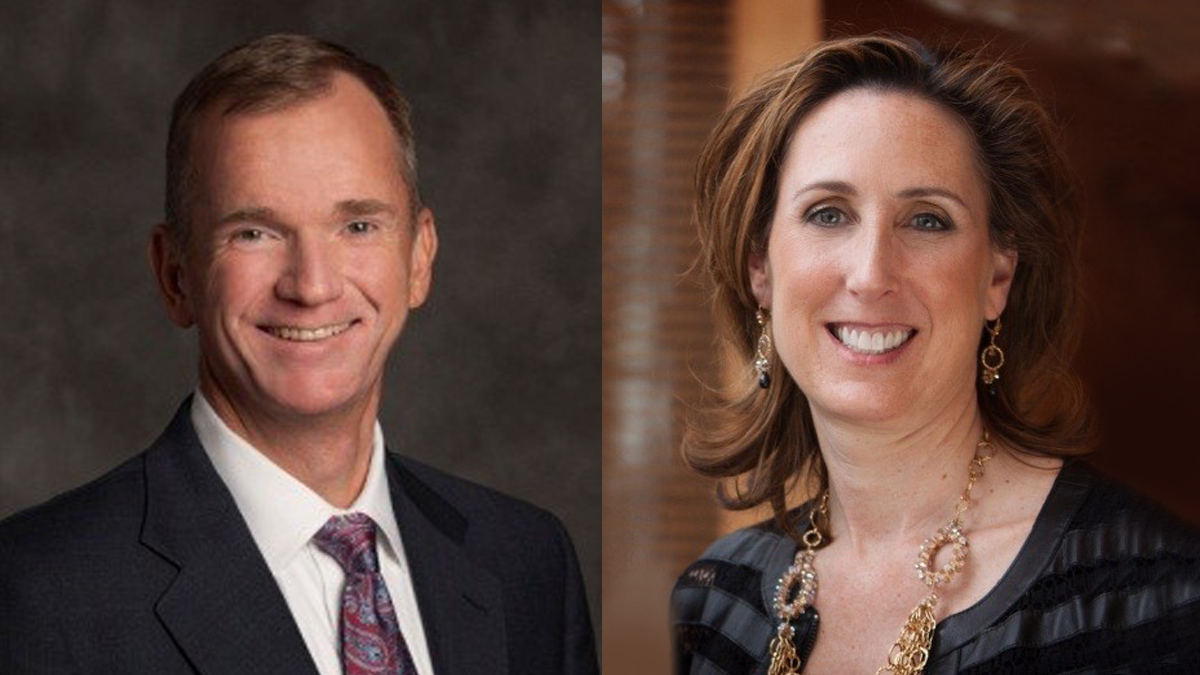Breakthrough T1D has a bold vision for the future: to accelerate mission and become more volunteer powered than ever before. The vision outlines Breakthrough T1D’s strategies to drive greater impact to unlock cures and drive research that improves the lives of people with type one diabetes (T1D) today.
T1D research is advancing at unprecedented rates. Beta cell therapies are being tested in people with T1D. And an immune therapy, teplizumab, was recently shown to delay onset of T1D by three years in people almost certain to develop the disease. These are some of the recent advances that would not have been possible without Breakthrough T1D.
In the midst of this progress comes a global pandemic, which upended our fundraising model. We’re now fast-tracking new strategies to maintain our mission momentum. The strategies focus on three areas: mission, funding, and community engagement.
Mission:
We continually evaluate our research portfolio and will prioritize opportunities with the greatest potential to lead us to cures and life changing advances in the shortest amount of time. A top priority will continue to be accelerating the development of first-generation beta cell replacement therapies that demonstrate six months of insulin independence or more. We’re also focusing on the development of disease-modifying therapies that delay, stop or reverse the development of T1D.
We are putting our focus on research closest to becoming real world, life-changing interventions, both through our research grants and T1D Fund investments. And we will continue to use our leadership to drive advances through the research and development pipeline so they get into the hands of people with T1D as soon as possible.
Funding:
We will continue our critical core community-based fundraising events, reimagined in a new operational model, while seeking to grow multi-year philanthropic giving. Events build community and engage our supporters. However, the need for social distancing has upended this model, showing the vulnerabilities of our reliance on in-person events. Also, greater efficiency is crucial. Our largely event-based model is resource intensive as we host hundreds of local events, such as Walks, Rides, and Galas, around the nation. And we must do more to reach all those with T1D. That’s why we have realigned our chapter footprint to leverage chapter and regional staff, as well as volunteers, to support broader geographies more efficiently and become a more “volunteer-powered” organization. We are also working to prioritize multi-year philanthropic giving, venture philanthropy, and individual giving to bring more dollars to mission.
Community Engagement:
We know that volunteers are the engine driving our success. We will become even more volunteer powered as Breakthrough T1D enables volunteers to have greater impact on mission than ever before. We’ll also engage people outside the areas where we have chapters and staff, using new digital strategies to reach even more supporters. We can widen our tent to include people outside the T1D community who also benefit from our research, such as people with insulin-dependent type 2 diabetes who, for instance, can benefit from our work driving innovation and access to diabetes technologies.
The University of Michigan announced the establishment of the Elizabeth Weiser Caswell Diabetes Institute at Michigan Medicine in collaboration with other university schools and units.
A $30 million gift from the Weiser family of Ann Arbor will support diabetes research and the development of life-changing diabetes therapies.
The Elizabeth Weiser Caswell Diabetes Institute will centralize and coordinate campus resources — anchored by a group of more than 250 world-renowned, dynamic researchers in diabetes, diabetic complications, obesity and metabolism — and allow University of Michigan to bring new depth and discovery to the quest for answers to diabetes.
The Institute is named for Breakthrough T1D Research Committee member Elizabeth Caswell, who will become 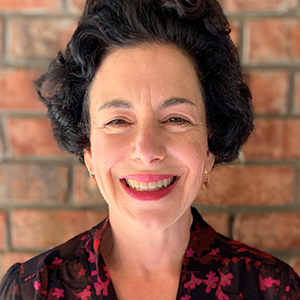 Committee Vice Chair, and a member of the Breakthrough T1D International Board of Directors, on July 1st.
Committee Vice Chair, and a member of the Breakthrough T1D International Board of Directors, on July 1st.
Two of Caswell’s three sons have type 1 diabetes (T1D), as does her husband.
“One of the things that has filled me with great pride is my volunteer work on the Research Committee at Breakthrough T1D. I’ve seen the progress that has happened since I met my husband in 1991 to having continuous glucose monitors and pumps that interact to make automated insulin delivery devices and there are more exciting potential changes on the horizon that will reduce the daily burden for people living with T1D,” said Caswell, also of Ann Arbor. “I’m so hopeful about cures for T1D that involve beta cell replacement and immunotherapies—these have the potential to impact millions of people.”
“Diabetes is so hard. You don’t want to think about complications, but you know they’re out there,” Caswell added. “Diabetes doesn’t allow anybody to shut down and forget about it; there’s no break. Fortunately, the team at Michigan Medicine has been there for us every step of the way — advising us on daily care, advances in treatment technologies, and opportunities for clinical research. Until T1D is cured, we are grateful for top-notch care at one of the best research institutions in the world.”
“Elizabeth has been a relentless educator and advocate for people with diabetes and for diabetes research,” said Ron Weiser, Caswell’s father, a member of the University of Michigan Board of Regents, who with his wife , Eileen, made the gift for the institute. “Our family hopes that the collaboration among physicians, researchers, innovators and advocates across campus will allow the work she’s done — and continues to do — to be rewarded with cures for diabetes.”
Type 1 diabetes affects nearly 1.6 million Americans. Research is invaluable to the T1D community as each discovery brings us closer to finding cures and new treatments that help ease the daily burden of living with T1D.
“This gift is transformational,” said Marschall S. Runge, M.D., Ph.D., executive vice president for medical affairs, dean of the University of Michigan Medical School and CEO of Michigan Medicine. “We are immensely grateful to the Weisers for opening the doors that enable our physicians and researchers to push the boundaries that will transition cutting-edge discoveries in diabetes investigations into lifesaving therapies for children and adults.”
 Caswell, who received JDRF’s 2019 Huntsman Family Community Engagement Award, is a champion for the Breakthrough T1D Center of Excellence at the University of Michigan.
Caswell, who received JDRF’s 2019 Huntsman Family Community Engagement Award, is a champion for the Breakthrough T1D Center of Excellence at the University of Michigan.
“The Center was inspirational to the gift that my family made to form the Institute,” Caswell said. “The Institute is larger in focus. It’s type 1, it’s type 2, it’s metabolic, it’s policy, it’s public health, it’s psychosocial. It’s anything and everything that touches diabetes across the entire University of Michigan with the cornerstone being scientific and medical research.
“By approaching things across disciplines, I hope that we can accelerate life-changing treatments and cures,” Caswell said.
At Breakthrough T1D, we are committed to funding the development of new therapies to keep people with type 1 diabetes (T1D) healthier, longer, until cures are found. We saw an incredible number of key advances that have both improved the lives of those living with the disease today and that have taken us so much closer to cures for T1D. Here to tell you about it is Aaron Kowalski, Ph.D., President and CEO at Breakthrough T1D. (You can also read the top advances below the video.)
Two-Year Delay in Onset: An immune therapy was able to significantly delay—for an average of two years—the onset of T1D. The drug is called teplizumab, and this was the first ever study in humans to show a delay in the onset of type 1. The drug is now being tested in a phase 3 clinical trial in people who have been recently diagnosed, headed by Provention Bio, a company with an investment from the Breakthrough T1D T1D Fund. If successful, we will be moving ever closer to a world without this disease.
Second Artificial Pancreas System Approved: The U.S. Food and Drug Administration has approved an algorithm that clears the way for the second artificial pancreas system to enter the market: the Tandem Control-IQ technology. Use of the algorithm resulted in more time-in-range, with less highs and lows, and no severe low blood-sugar events. This is a win for all of us in the T1D community as it provides people with another option to improve daily blood-sugar management.
Europe and Japan Approve Three Adjunct Therapies: SGLT inhibitors, which have been approved for type 2 diabetes since 2011 and help diminish blood-sugar swings, received approval for use within T1D, as well. European and Japanese authorities approved three SGLT inhibitors, to use with insulin to improve glycemic control in adults. These approvals provide the international community with another option to improve daily blood-sugar management, and we applaud the international community for these approvals.
Pharma Makes a Landmark Investment: Our investment in the T1D space has been multiplied by the Breakthrough T1D T1D Fund, a venture philanthropy fund we started in 2016. Now just over three years old, the T1D Fund had almost 100 million dollars under management and had made almost 50 million dollars in investments. One of those companies, Semma Therapeutics made headlines when it was acquired by Vertex Pharmaceuticals for nearly 1 billion dollars. Semma was founded by Dr. Doug Melton, who was backed by Breakthrough T1D and made breakthroughs in making beta cells from stem cells, work that Semma continues to advance toward novel beta cell replacement therapies for T1D. By bringing other, larger firms’ investments in the T1D space and re-investing returns from its investments, we can leverage our resources much more quickly and strategically, with the ultimate goal to find cures for T1D and improve the lives of those living with the disease today.
Breakthrough T1D Advocacy: Our volunteers, teams and Advocacy Leadership have also done tremendous work this past year, passionately fighting for the renewal of the Special Diabetes Program and additional funding for T1D research. This included hosting our 2019 Children’s Congress, with 165 student delegates sharing their personal stories and showcasing the need for ongoing research to find cures for T1D. Breakthrough T1D Advocacy has also been relentless in speaking up against the high cost of insulin and ensuring personal choice in treatments.
Community Engagement: Our Chapters and Community Engagement teams also have increased educational efforts, mentorships, support for the newly-diagnosed and new information on advances in technology, medicine and research that might help their personal management of this disease. Their work is both tireless and inspiring, and incredibly impactful.
As a community, we want to grow stronger and healthier together. As an organization, we will push harder, faster and with dedicated focus to get us to cures.
What might be the next best thing to having a healthy pancreas that is steadily producing insulin? It could be a device inside a person’s body that would protect the implanted beta cells from attack, while allowing the cells to produce insulin for you. Dan Anderson, Ph.D., has been working for years to create devices that deliver therapies to people who need them, including type 1 diabetes (T1D).
Delivery of insulin via devices is difficult in T1D cases because of the body’s own autoimmune response. Not only does the body attack beta cells in T1D, but the immune system also attacks foreign substances – including engineered items like a device. Anderson, a professor at the Massachusetts Institute of Technology at the institute for medical engineering and science, has been working with colleagues for years to create devices that can successfully deliver insulin to people with T1D over time.
In the past, the only way to get beta cells was to take them from a donor pancreas. But research in that area has come a long way. Teams that Dr. Anderson has worked with have been able to produce unlimited beta cells from stem cells, but now everyone is dealing with the difficulty of evading the immune system.

Dr. Anderson’s lab has helped develop a device that protects beta cells inserted into animal models. The device is coated with a substance that keeps the body from forming scar tissue around the device. That way, the beta cells inside can get the oxygen and nutrients that they need to survive and thrive. Wrapped around the device is a layer that allows some immune cells in, but not the T cells that would harm the beta cells. “This device allows us to transplant these cells to survive and function without immune suppression, thereby providing blood sugar control without outside injected insulin,” says Dr. Anderson.
The next phase of research is aimed at refining the device, as well as determining the optimal location for where it should be placed in the body, to help it function much longer, and in humans.
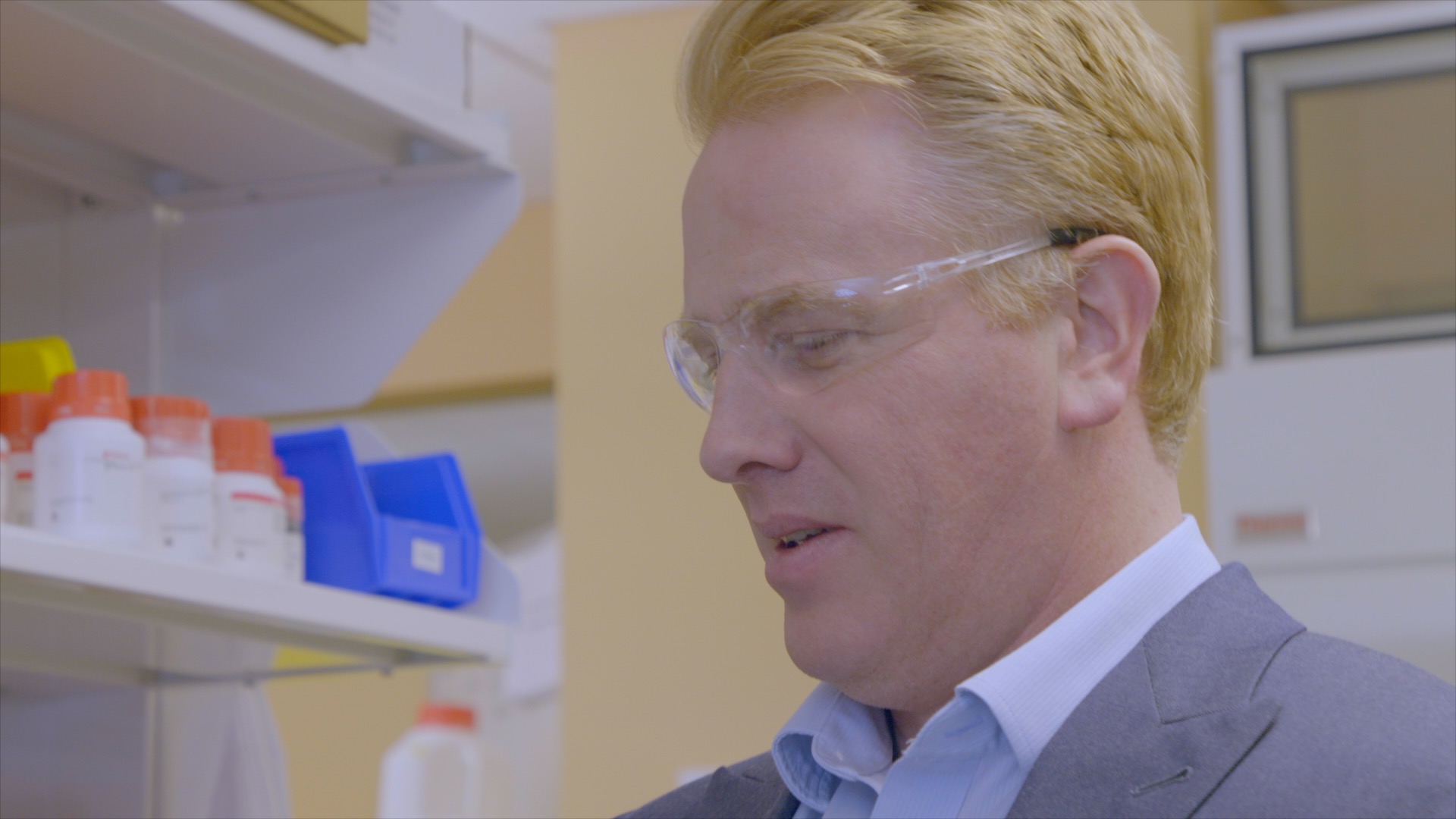
Hear Dr. Anderson talk about his research—and get introduced to many more Breakthrough T1D-supported researchers—by visiting our new site meet the Scientists. See how researchers are forging their own paths to help find cures and improve the lives of those living with T1D.
Funding beta cell replacement research is extremely important to Breakthrough T1D. Please consider donating today, to help push our progress forward toward T1D cures with your support.
Quite quickly, the coronavirus pandemic has disrupted daily life, jolted perspectives and could very well change how we work and interact with each other for a long time to come.
But what has the impact been inside research labs, where Breakthrough T1D-funded scientists have been driving hard and fast to deliver cures for type 1 diabetes (T1D) and improve lives?
The fact that COVID-19 is here doesn’t change anything about the need to continue the momentum for T1D.
In short: research continues, as does the fight to cure T1D.
“The fact that COVID-19 is here doesn’t change anything about the need to continue the momentum for T1D,” said Mark Poznansky, M.D., Ph.D., Director of the Vaccine and Immunotherapy Center at Massachusetts General Hospital. He also is a researcher and attending physician for general and transplant infectious diseases.
“Nothing has changed from that point of view,” he said. “We must continue to think about and work where possible on a cure for T1D.” Around the world, researchers echo Dr. Poznansky’s commitment.
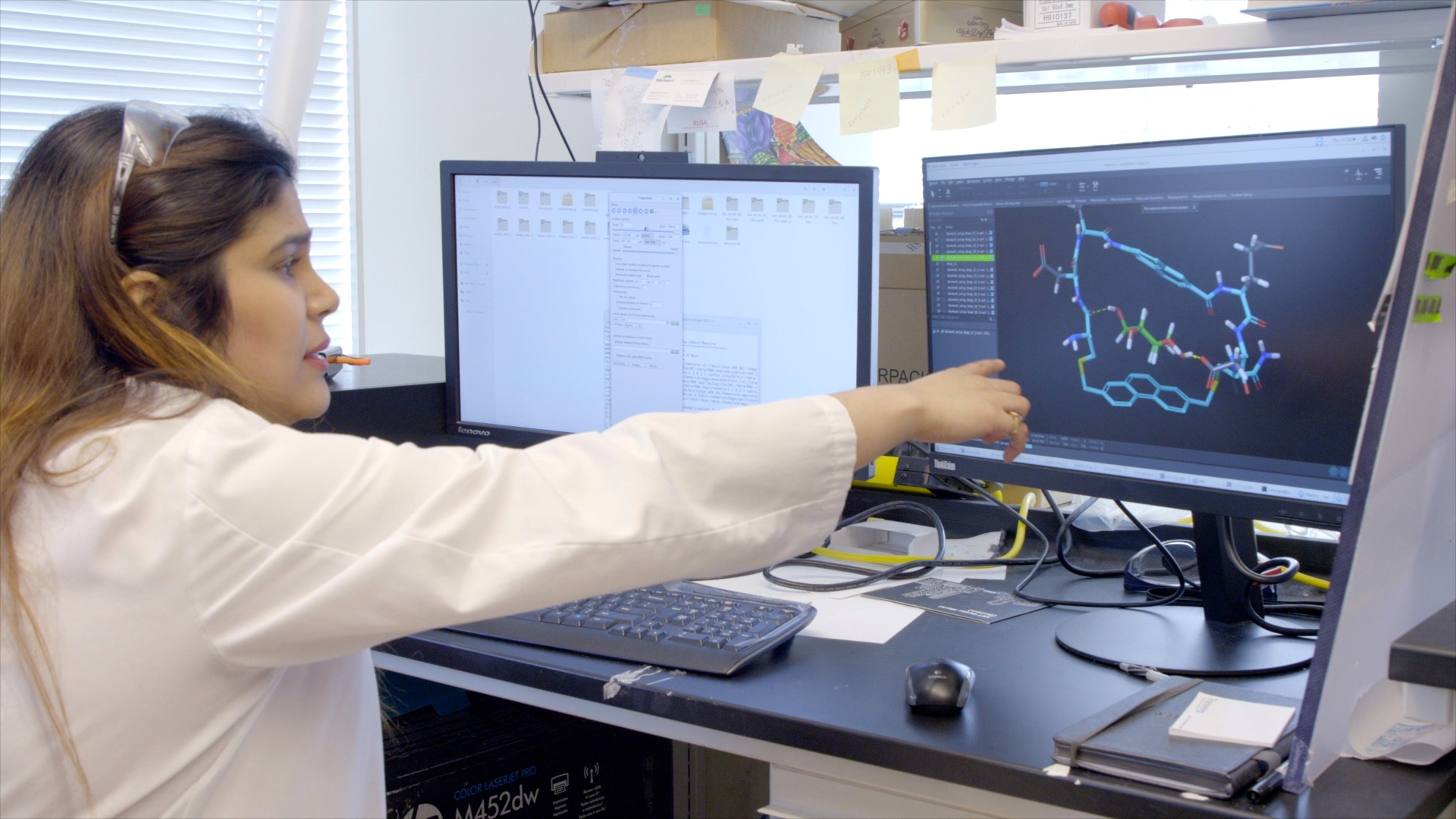
Work processes are changed and some slowed, but research continues.
At Massachusetts Institute of Technology, teams have shifted their focus to critical projects that can be done remotely. “We have currently prioritized our work on designing computational modeling experiments, literature research and learning new techniques online,” said Chandrabali Bhattacharya, Ph.D., an MIT postdoctoral fellow. “We are also working on manuscripts.”
Other researchers are focusing on analyzing data sets, writing up methods and re-ranking their upcoming experiments in order of relative importance. “This period of reflection and study is really important. I view it as a great opportunity to develop new ideas and refine existing ones,” said Bridget Wagner, Ph.D., scientist at the Broad Institute in Boston.
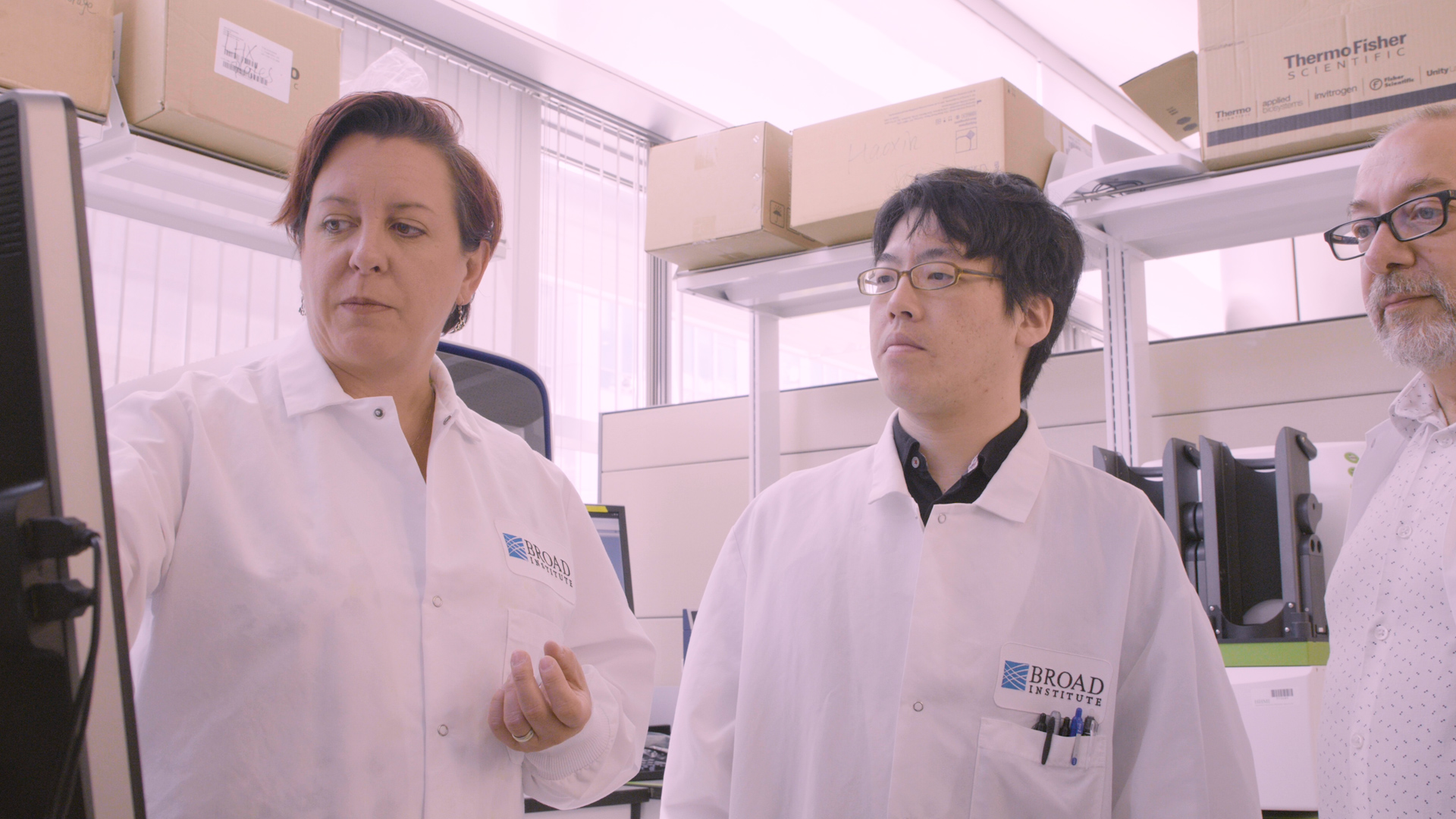
Josephine Forbes, Ph.D., honorary professor at Mater Research in Australia, says most researchers are part of larger global teams, and this is a good time for those teams to coordinate by evaluating projects and their associated findings. She also notes the number of other tasks that researchers can focus on. “In research there is ALWAYS reams of paperwork, data analyses, training updates and reading of others work, which usually get squeezed into the wee hours of the morning. Time to get that all done!”
Bastiaan de Galan, M.D., Ph.D., assistant professor at the Radboud University Medical Center in the Netherlands, is busy reorganizing his work so that when he can return to the lab, he can hit the ground running. “Diabetes research is facing delays, but we will pick it up once the pandemic is under control and double the pace to catch up.”
A few labs remain open for T1D-related work.
Dr. Poznansky said emergency exemptions are keeping some labs open, including those that work with animals and insulin-producing cells. The welfare and potential loss of experimental animals made the research too critical to halt. “We were allowed to continue several animal experiments with extended time points. It was important not to lose that long-term data.”
Kathrin Maedler, Ph.D., of the University of Bremen in Germany, said she is able to access labs for the same reason. “[They] understood that animal experiments cannot just close down, and therefore my team is allowed with a special permission to enter the building and continue animal care and research. Thus, luckily, our research is not so much affected by the lockdown.”
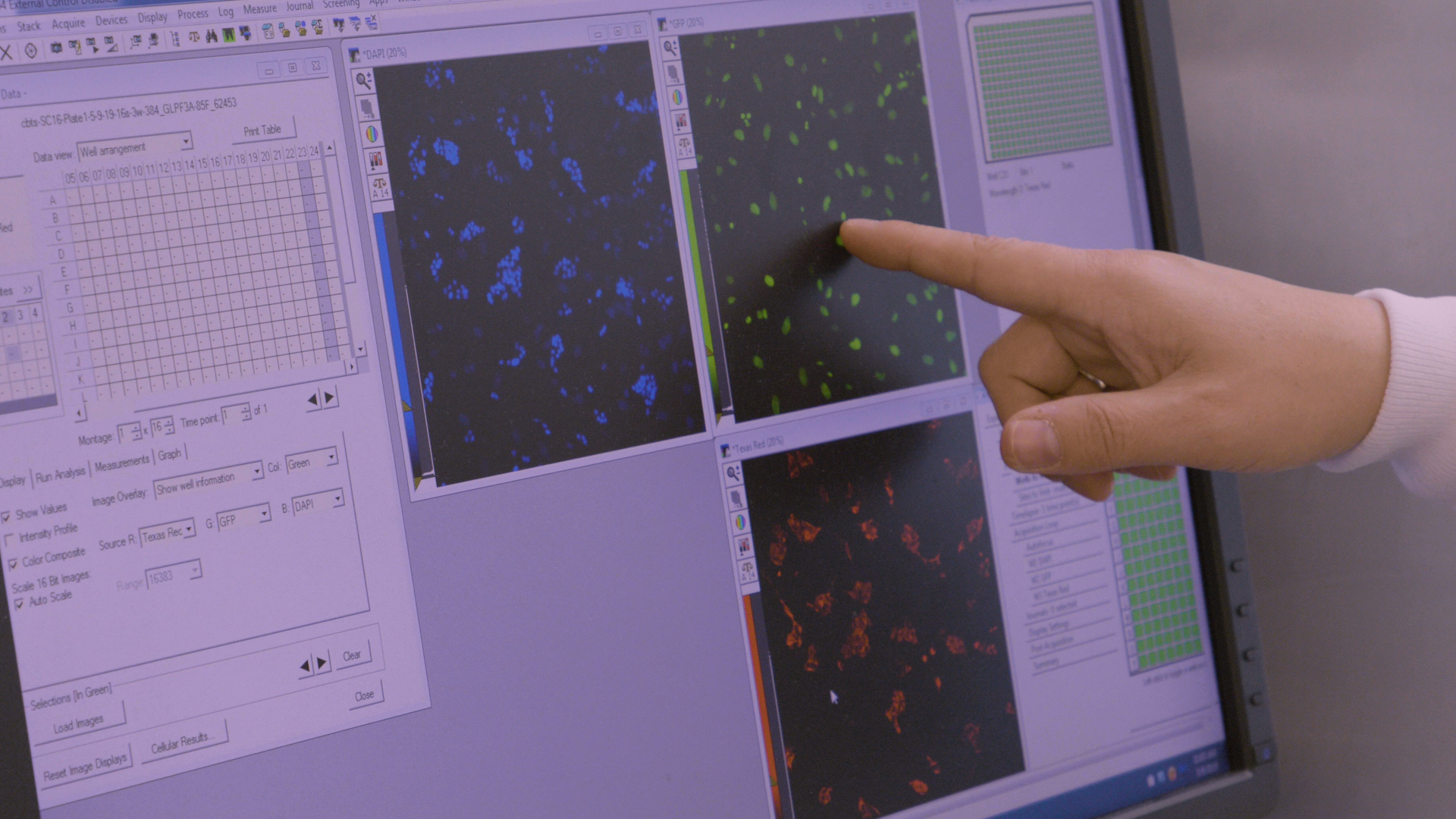
Some Breakthrough T1D-funded researchers have joined the fight against COVID-19.
Dr. Wagner said the Broad Institute was recently named a Massachusetts state reference lab for COVID-19 testing. Teams there are performing thousands of tests a day, so activity at the processing lab is extremely robust.
Breakthrough T1D-funded researcher Robert Langer, Sc.D said a company he co-founded, called Moderna, had been working on general coronavirus vaccines for some time. At the outset of this outbreak, the Moderna team quickly pivoted to include work on COVID-19. “We are working on stopping COVID-19 by various means. Moderna already has a vaccine in clinical trials,” said Langer, who also is a professor at the David H. Koch Institute at MIT.
Technology is helping everyone adapt and ensure work continues.
“MIT was very quick to respond and take measures implementing social distancing and later on shutting down to keep every one of us safe,” says Bhattacharya. “We are all adapting to the idea of working remotely.”
Riitta Lahesmaa, Ph.D., of the University of Turku in Finland says she meets with her team members more frequently to ensure that work continues to move forward as quickly as possible. “Meetings are frequent and arranged via videoconferences,” she said.
Technology has also enabled patient appointments to continue uninterrupted. Jennifer McVean, M.D., assistant professor at the University of Minnesota, says all of her recent patient appointments have been converted to virtual visits. “I am so thankful for diabetes technology, as patients can upload their devices at home and I can access their data remotely….Over 80% of outpatient clinical care has been shifted to telemedicine.”
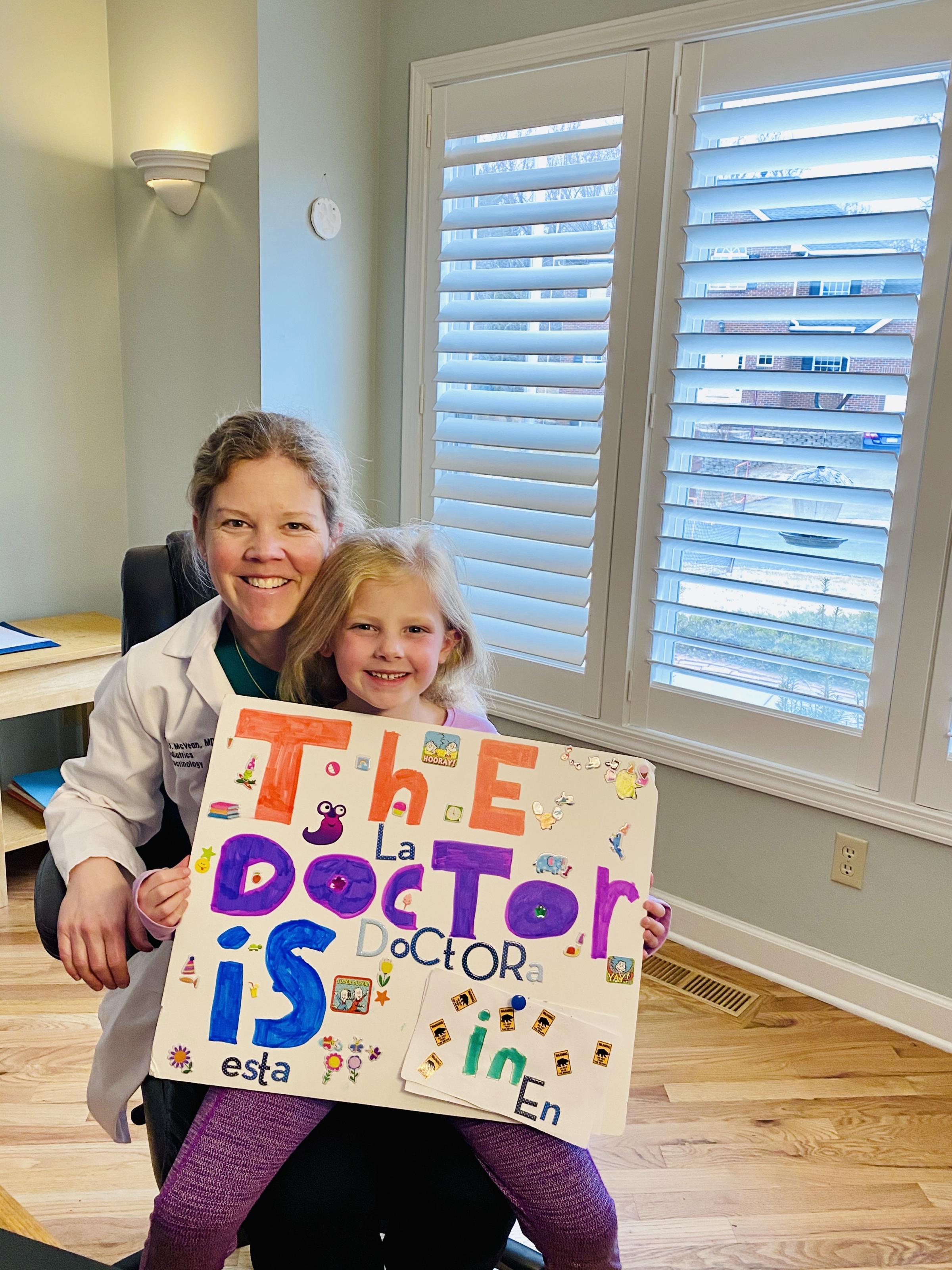
Jennifer McVean, M.D., who has lived with type 1 diabetes for 32 years, and her daughter, Elizabeth, in their “new” office.
A resilient spirit is indispensable right now.
Elad Sintov, Ph.D., a postdoctoral fellow at Harvard University, said he feels disarmed from his tools because he cannot access lab equipment. “As a person that had a mission, it’s easy to fall into frustration in these times, but when you have a goal and purpose—curing T1D—you can’t give up.”
“Research is important. We have a destiny; to find a cure for T1D,” says Dr. Maedler. “We have so many experiments running, and thanks to special permits the corona cannot stop us to do our research. It’s difficult, but we can do it.”
Perhaps Dr. McVean sums it up best: “T1D research is a marathon, not a sprint. Right now, we need to pause, stay at home, and stay safe and healthy. When we emerge on the other side of COVID-19, we will pick up the race to cure T1D with renewed energy and passion.”
Covid-19 has brought the entire planet into unprecedented times.
Thanks to technology, COVID-19 has not put the brakes on Breakthrough T1D’s support to the T1D Community and fulfilling our mission. With the help of technology, Breakthrough T1D is continuing to serve our community at the same pace and dedication.
Here are some of the key technologies Breakthrough T1D is using during this pandemic.
- Virtual Working: All of Breakthrough T1D employees are working remotely now. The transition to virtual working has been seamless due to the right technology Breakthrough T1D has put in place for its employees. During last year, as part of Breakthrough T1D’s Digital Transformation initiative, all Breakthrough T1D employees were provided with laptops, collaboration technology platforms (e.g. Microsoft TEAMS), productivity platforms (e.g. O365, OneDrive) and cybersecurity tools (e.g. Multi-Factor Authentication, 24×7 Cyber Monitoring).
- Move to Cloud-based Applications: Breakthrough T1D has transitioned all its legacy on-site business operations applications to the cloud (e.g., Financial systems, CRM, email, Datawarehouse moved to AWS/Azure). This has ensured business continuity even though all employees are remote now.
- Leveraging Digital Channels to Support the T1D Community: Breakthrough T1D has continuously updated its website to provide up to date COVID-19 information for the T1D community (https://www.breakthrought1d.org/coronavirus/). Breakthrough T1D internal intranet for employees (MyJDRF) has also been revamped to ensure staff are aware of the latest communications.
Breakthrough T1D will be continuously upgrading its technology to support and accelerate our T1D mission.
Sri Mishra
CTO, Breakthrough T1D
The questions came like a waterfall as Breakthrough T1D President and CEO Aaron J. Kowalski, Ph.D., hosted a Facebook Live event on April 3 with hundreds of members of the type 1 diabetes (T1D) community.
As he spoke, attendees used the “chat” feature to repeatedly ask: “Is he a type one?” Others chimed in quickly: “Yes!” Dr. Kowalski is Breakthrough T1D’s first president with T1D, diagnosed when he was 13. (His brother was diagnosed before him, at age 3.)
“The best piece of advice I received in managing my type one was from my parents, who told me and my brother: ‘You’ll be able to do everything your friends can do and more.’ They were right, don’t let it hold you back. You only live once.”
Dr. Kowalski talked about T1D research moving forward even as so many institutions have closed because of the coronavirus pandemic, how he plans to support research without Breakthrough T1D’s iconic large-crowd events and what the future of T1D research looks like.
He also answered a question that many on the chat said they thought he might avoid:
Why haven’t we cured type one diabetes?
“I am going to tackle this because what you will find with me as CEO of Breakthrough T1D is full transparency. I know that many supporters are frustrated. ‘Why is there not a cure yet. Should I believe you when you say we are making real progress?’”
The question was driven by a pledge made by Breakthrough T1D in the late 1990s that a cure for type 1 diabetes was just years away.
At the time, researchers where working on islet transplants, which took beta cells from a cadaver pancreas and implanted them in a person with T1D. Once transplanted, the islets were to begin producing insulin and regulating blood-glucose levels. The procedure was used mainly in cases of extreme and unpredictable blood-sugar swings and hypoglycemia.
“These islet transplants cured people with type 1 diabetes,” Dr. Kowalski said. “Two decades later, these people are still insulin free.”
The challenge, researchers quickly realized, was twofold. First, they did not have access to enough beta cells. In the last 20 years, about 5,000 islet transplants have been performed; yet 64,000 new T1D diagnoses are made every year in the United States alone. Second, the treatment needed ongoing immunosuppression medication for the new cells to be retained by the body. The ongoing use of immunosuppression medicines can lead to other medical issues.
“This was not a bait and switch. This was something that we believed was real—and it was—it just was not scalable. But believe me that we are working to make it scalable, and it will happen.”
Dr. Kowalski said scientists have been racing to solve both challenges, with Breakthrough T1D driving their research through funding, collaboration, and strategically bringing in new expertise and partners to tackle the problem.
How has research gotten us close to cures?
“We now have line of sight to address both of those barriers. We can now make insulin-producing cells from stem cells and that would allow for the supply and demand issue to be fully addressed,” Dr. Kowalski said.
In September 2019, a company long supported by Breakthrough T1D and working to mass produce insulin-making cells was bought by a major pharmaceutical leader. “They made a huge investment to make this work real.”
In addition, Dr. Kowalski pointed to a series of projects working to implant cells without the need for potentially harmful immunosuppressant drugs. He said research being done at the new Breakthrough T1D Center of Excellence at Northern California is forward reaching and groundbreaking in “working to cure type one diabetes with immune suppression-free cell transplants.”
How has COVID-19 impacted T1D research?
Work in T1D research continues, but the coronavirus pandemic has slowed some projects where researchers are not able to access labs, Dr. Kowalski said.
“In January, we were saying we are in real renaissance of research in terms of cures for type one diabetes, making real, tangible, specific progress….We were all coming together and moving fast. And now, here we are, seeing research slowing down because we can’t get into some of the labs. It’s hard. But one thing we know for certain: we are going to come out of this, it won’t last forever. We will come back, focus on our mission to cure type 1 diabetes.”
Why does Breakthrough T1D need to keep fundraising if research has slowed?
Regardless of what else is happening in the world, T1D does not stop, Dr. Kowalski said. And neither does T1D research or Breakthrough T1D’s support of the T1D community. Breakthrough T1D continues to support ongoing research, clinical trials, and plan for the coming months when all work resumes full speed.
In addition, the needs of the T1D community are not less, but more, because of COVID-19. He said Breakthrough T1D is working “round the clock” with other organizations to share accurate, clear messages and advice, and that Breakthrough T1D continues to advocate for the needs of the community—including ongoing medical coverage, affordable access to insulin, and availability of T1D supplies in hospitals facing extreme shortages during the pandemic.
How can you raise funds without in-person events?
Breakthrough T1D is transforming its walks, rides, and galas into virtual events, where people and teams still participate, but on their own instead of in a large group. Rather than connecting in person, they connect virtually through social media. Dr. Kowalski is joining two “virtual runs” and said Breakthrough T1D has hosted several successful virtual walks already, with more to come.
“Where people can, and are able to, we hope they will continue to support this mission so that we can cure type one diabetes for everyone.”
Several decades ago, type 1 diabetes (T1D) patients brought their seeing-eye dogs into the offices where Jennifer Sun, M.D., MPH., now works. The complications of T1D had severely compromised or cost the patients their eyesight.
Today, work led by Dr. Sun is changing all that.
We share Dr. Sun’s work as part of our Meet the Scientists series, but also in celebration of Women’s History Month and Save Your Vision Month.
Dr. Sun, is a surgeon at the Joslin Diabetes Center and an associate professor in the Harvard Department of Ophthalmology, and is one of the more than 400 researchers supported by Breakthrough T1D donors.
For 14 years, Dr. Sun focused on preventing diabetic eye disease and has helped advance physician’s ability to diagnose eye disease earlier and faster. That’s a critical focus for the future, as more than 90% of people with T1D develop diabetic eye disease within two decades of being diagnosed. With early diagnosis, doctors can create better outcomes and prevent vision loss.
Recently, multiple technologies have come together in a way that allows researchers to intervene earlier for people with diabetes, and identify the treatments that they need sooner. Instruments such as adaptive optic scanning and laser ophthalmoscopy are complex, but they help scientists look at tiny structures in the eye. Dr. Sun can see a person’s eye in minute detail. So precise is this technology that Sun can view a single cell passing through an ultra-fine capillary, which are the smallest blood vessels that supply nutrients to our eyes.
Dr. Sun thinks the next phase of research is to combine that kind of personal imaging data with electronic medical data that has been captured from many patients across thousands of clinics. By using artificial intelligence algorithms, researchers may be able to identify patients who need treatment earlier, and develop new therapies for them.
“What I hope is that the research projects I’m doing today, sometime down the road I’ll be able to look at them and say those made a difference in saving vision in our patients with T1D,” says Dr. Sun.
Get introduced to Breakthrough T1D grant recipient Dr. Sun. See how researchers are forging their own paths to help find cures and improve the lives of those living with T1D.
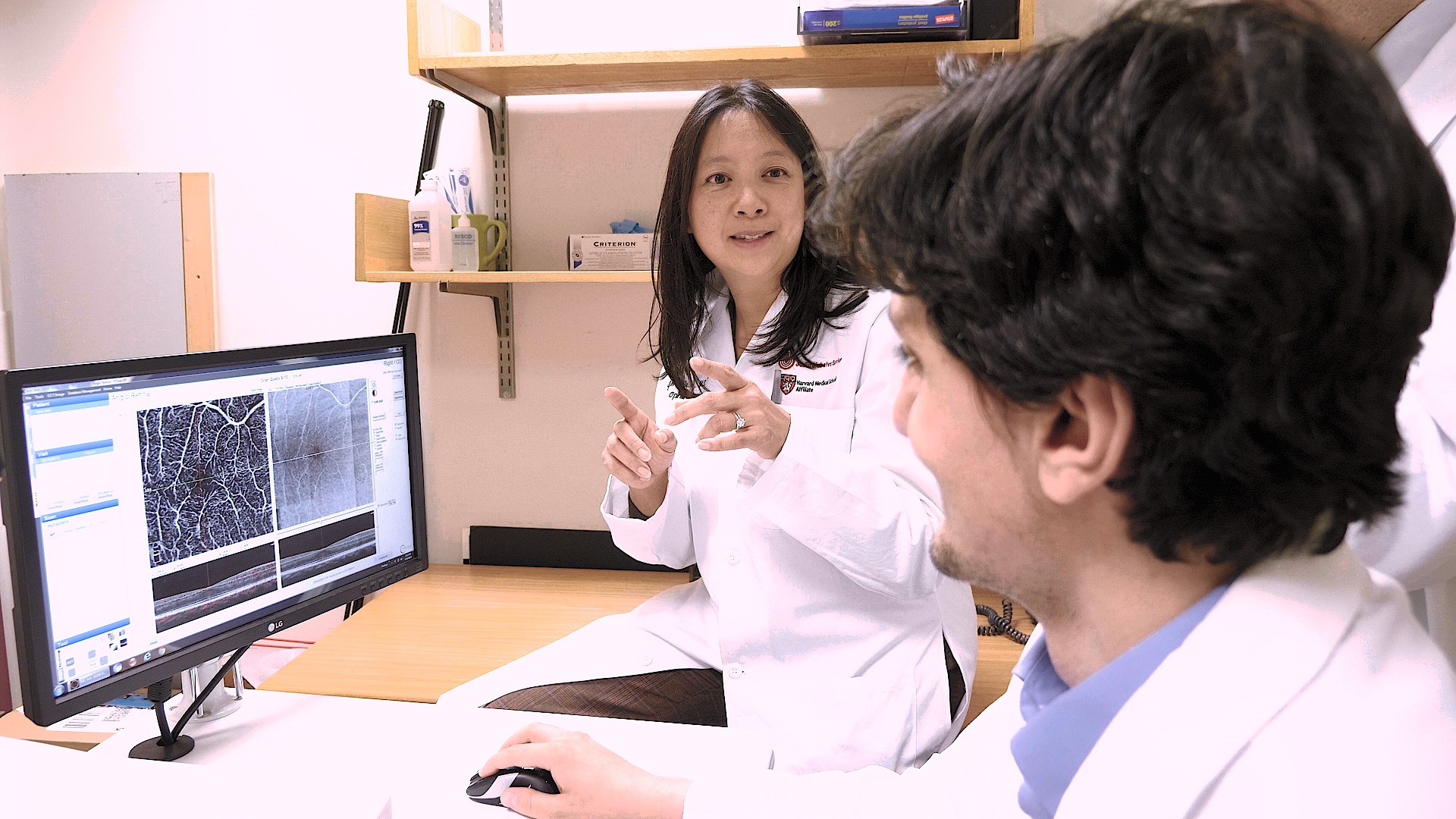
Ensuring eye complication research continues is extremely important to Breakthrough T1D. Please consider donating today, as we help those with T1D today and work to prevent future complications with your support.
The Breakthrough T1D International Board of Directors (IBOD) named two long-time volunteers to serve as Chair and Vice Chair when current board leaders end their two-year terms on July 1.
Joseph P. Lacher, Jr., who is President and Chief Executive Officer of Kemper Corporation, will serve as Breakthrough T1D Chair, succeeding current Chair Ellen Leake. Joe is a long-time Breakthrough T1D volunteer who was diagnosed with type 1 diabetes (T1D) while in college and has two adult sons who were diagnosed as children.
Previously, Joe served as Illinois Chapter Board President and has held several roles with the Breakthrough T1D International Board of Directors, including serving on the Talent and Compensation Committee and Funding Committee. The year Joe and his family served as the “Fund a Cure Family” for the Illinois gala. The chapter raised a record-setting $7 million.
“My life and that of both of my sons are so much better because of the work Breakthrough T1D does every day,” Joe said. “It has been a humbling experience to be a part of this organization, and I am honored to take on this new role as IBOD Chair to help Breakthrough T1D accelerate the development of cures for our community.”
Lisa Fishbone Wallack, a former attorney and passionate community fundraiser, will serve as Vice Chair, succeeding current Vice Chair Jeff Plumer. Lisa has been part of the Breakthrough T1D family her entire life, as her parents began volunteering after her brother was diagnosed at 18 months. In the 1980s, her father served as IBOD Chair. Lisa’s involvement increased when her son was diagnosed at age 5.
Lisa has served as New England Chapter President and held two terms as Board member. She also served as Co-Chair of Breakthrough T1D’s Leadership Giving Working Group.
“Breakthrough T1D has been part of my family for as long as I can remember,” Wallack said. “The progress we have made in the past 50 years is inspiring, with significant improvements in the quality of life for those living with type 1 diabetes and profound new understanding about the disease. I am confident that together, we can drive the ongoing progress needed to achieve our ultimate goal of curing and preventing type 1 diabetes.”
IBOD is the governing body for Breakthrough T1D, the leading global organization funding type type 1 diabetes research and the driver behind nearly every major advance—drug, device, cell therapy—made in T1D in the last 50 years.
“The appointment of these two highly successful and dedicated leaders speaks to the depth of talent and passion we have at Breakthrough T1D,” said Breakthrough T1D President and CEO Aaron J. Kowalski, Ph.D. “We know that with their extraordinary experience and commitment, Breakthrough T1D will accelerate our race to find cures for this disease.”
Under Ellen and Jeff’s leadership, Breakthrough T1D transformed its governance model, moving from a 35-member board to one with up to 15 members, each selected for key leadership strengths with the aim of creating an IBOD that is laser-focused on purpose, efficiency and higher impact. They also led the selection of Breakthrough T1D’s new President and CEO, Aaron J. Kowalski, Ph.D., and the creation of a new Global Mission Board aimed at tapping the unique talents of Breakthrough T1D volunteers to accelerate work on the Breakthrough T1D mission.
Inspired by the past, driven toward tomorrow.
That message was woven throughout this year’s Breakthrough T1D Mission Summit, organized to share news of exciting type 1 diabetes (T1D) advances and outline Breakthrough T1D’s plans for the future.
“Because of so many dedicated supporters, our extraordinary journey has improved and saved lives,” said Breakthrough T1D President and CEO Aaron J. Kowalski, Ph.D. “And we are accelerating our work to accomplish so much more.”
The event brought together some of the word’s leading T1D scientists working with Breakthrough T1D and advancing focused-on therapy areas. As part of the event, Breakthrough T1D honored five scientists for their leadership work in the field of T1D. Each, in turn, thanked Breakthrough T1D supporters for enabling and driving their work forward.
Ellen Leake, Chair of Breakthrough T1D’s International Board of Directors, highlighted the organization’s earliest days, when two mothers joined together 50 years ago to fight T1D and improve lives for people with the disease.
“Right from the start, from that truly humble beginning, ours was a story of inspiration, showing the Power of Us—the power that we could have by working together,” Ellen said.
“In those very early days, Breakthrough T1D was just a small collection of volunteers. But amazing volunteers who drove some truly forward-thinking, high impact work that shaped who we are, and the impact we are having today.”
Breakthrough T1D volunteers built a network of researchers working in collaboration; chapters to support people with T1D in their own communities and life-changing programs such as the Bag of Hope, Galas, and Walks.
“Each program created connections so that those with type 1 diabetes would know they are not alone—while also raising awareness of type 1 diabetes and raising critically important funds to drive research to cure this disease,” Ellen said.
Today, Breakthrough T1D is the world’s largest philanthropic funder of type 1 diabetes research. Breakthrough T1D has raised more than $2 billion to fight T1D and also secured $3 billion in government funding through our advocacy. Breakthrough T1D has played a major role in the discovery and availability of nearly every T1D advance of the past 50 years.
Aaron joined Ellen in applauding the progress that has been made in improving the lives of those living with T1D, then focused on what’s next.
“Because of the work of Breakthrough T1D volunteers and supporters all over the country, we are at the cusp of enormous opportunities to further Breakthrough T1D’s mission to improve lives of those living with type one diabetes and to find cures for this disease,” Aaron said.
He focused on Breakthrough T1D’s work to accelerate advances across the research pipeline, moving promising research from one stage to the next and ultimately into the hands of the T1D community so to improve outcomes.
“Our job—and my job as CEO—is to accelerate.”
Key in driving toward curing T1D is to accelerate work in beta cell therapies and immune therapies.
“Not only have we figured out how to make beta cells—but we are making them in large quantities and, this year, we developed a super beta cell that acts more like the original—responding faster and better to the body’s need for insulin,” Aaron said.
Scientists also are learning how to transplant beta cells into the human body without rejection and without ongoing doses of immunosuppression medicine.
“What we care about is our loved ones doing better,” Aaron said. “I spend every waking moment thinking about how we can move things faster.”
Next from Mission Summit: What is new in Beta Cell Research and a recap of work being done in all key therapy areas.
